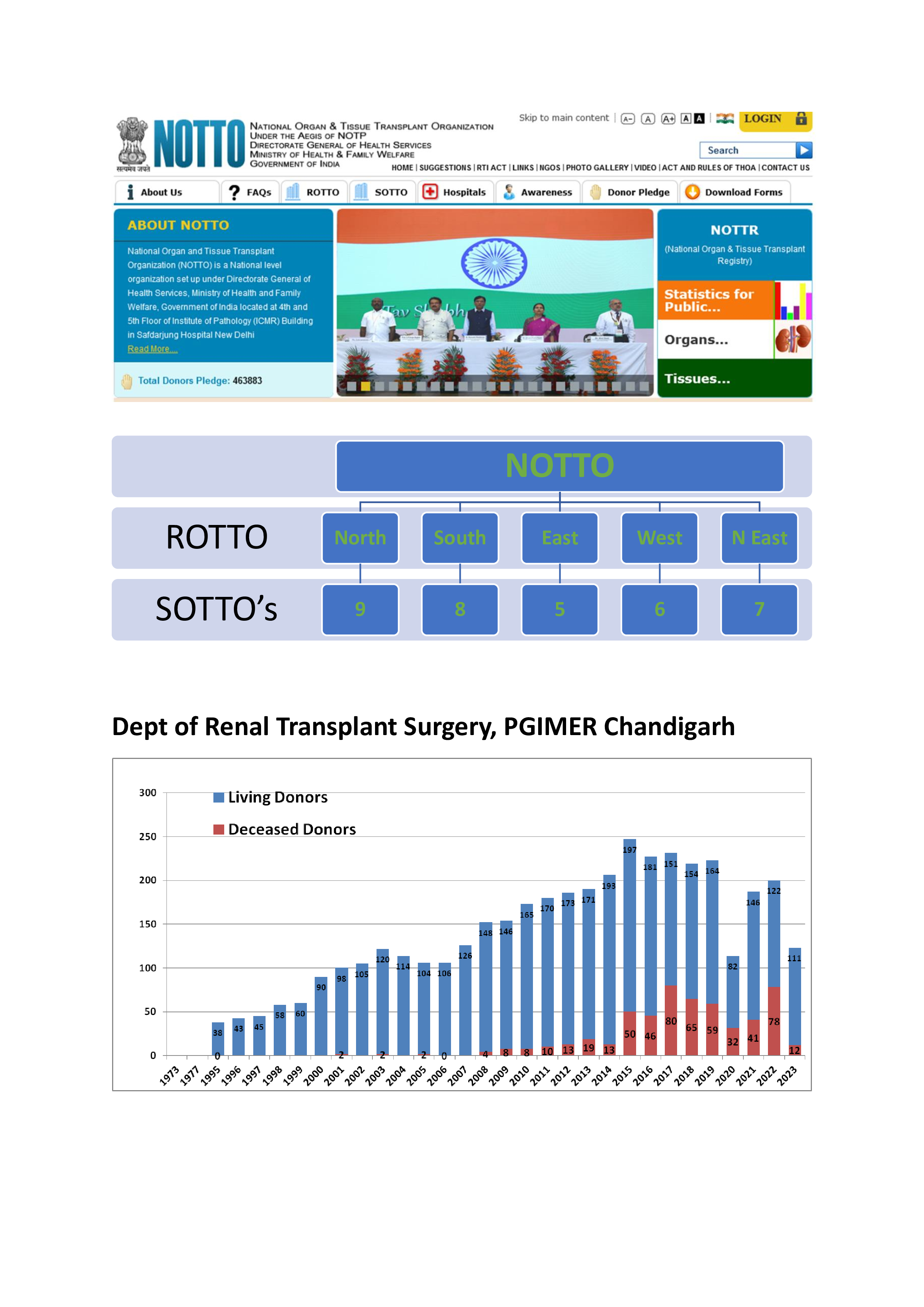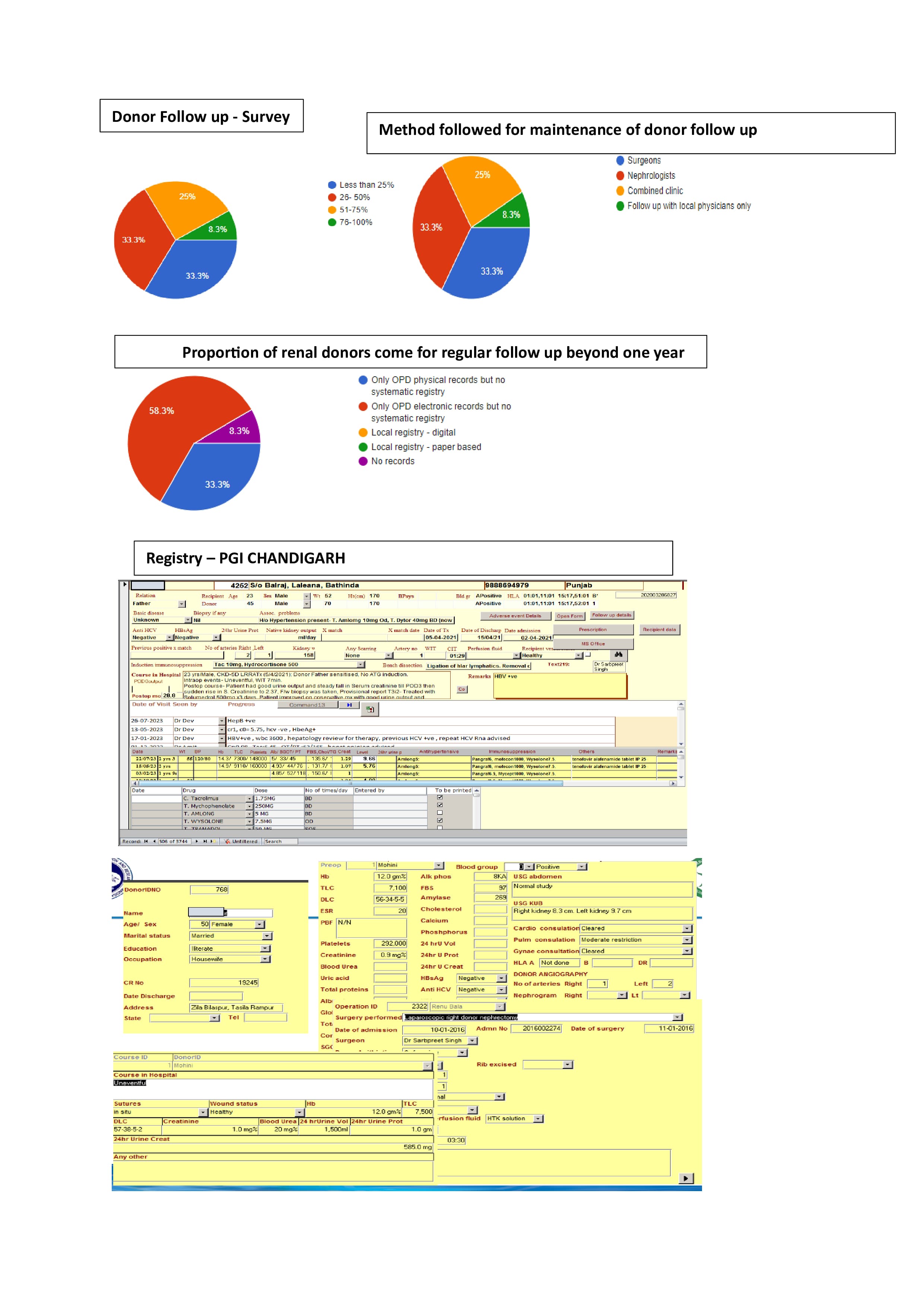Long-term follow-up of living kidney donors: A need for Indian Registry
Nasika Venkata Kanaka Naga Karthik1, Ashish Sharma1, Deepesh B Kenwar1, Sarbpreet Singh1, Jasmine Sethi2, Bharat Bhushan1, Sheenam Dhiman1, Vivek Thakur1, Sahil Rally1, Sai Praneeth Reddy1, Sanjeev Chauhan1, Abhilash Tirkey1, Belmin B J Winston1.
1Renal Transplant Surgery, PGIMER, Chandigarh, India; 2Nephrology, PGIMER, Chandigarh, India
Introduction: Live donors undergo a major surgery with no objective benefits. They should receive life long care and followup to monitor long term outcomes and events. However, there is no such nation wide registry yet in India. This study aimed to follow up of clinical outcomes and long term events of living kidney donors.
Method: This is a single centry study from PGIMER, Chandigarh with 20 years followup of total 2980 live donors. They are routinely evaluated with annual physical visits, online teleconsultation. History, physical exam, blood pressure checks, creatinine, urine routine microscopy, sugar levels etc., were assessed at each visit and details entered in electronic database.
Results: This is the first largest registry on long term follow up and events of living kidney donors from India.

Mean donor age, weight and BMI were 45.8, 61 kg,and 24.6 respectively with followup rate of 30-60%. Male to female ratio is 1:3.

The rate of hypertensive (HTN) donors has increased from 2.5%(2004) to 10.9%(2023). No diabetic donors were taken up for transplant. Twenty six donors had new onset HTN after kidney donation. Post donation diabetes was seen in 18 donors. Total donor deaths were n=15 ( n=3 died due to malignancy; n=3 had accidental death; n=3 succumbed due to covid-19 illness, n=1 died of advanced age; n=1 died of urosepsis; n=1 died of neurological illness. Six donors had proteinuria, Stage 3 CKD was seen in two donors, end stage renal disease was seen in three donors with one death, one donor on dialysis and one requiring transplantation.
Conclusion: There is a dire need to develop donor registry nation wide in India. Proportion of renal donors with comorbidities continue to rise as it is expected, thus requiring persistent and thorough followup.
[1] Living donor
[2] Follow up
[3] Transplant registry
[4] Post donation long term issues
